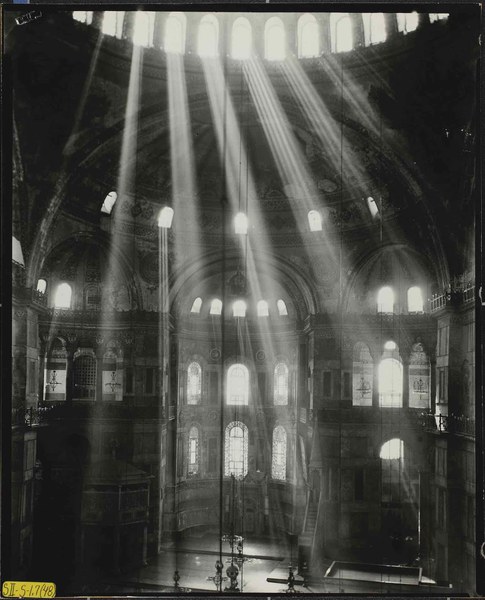“Sancta Sophia is a sphere of light. It is the universe of buildings. Sancta Sophia: Holy Wisdom. It is what the world needs most and has lost.”
—Thomas Whittemore in a letter to Isabella Gardner, July 6, 1920
This talk explores the phenomena of light and sound in Hagia Sophia as manifestations of Holy Wisdom. Pentcheva’s research draws on Byzantine ekphrasis of the Great Church and on mystagogic texts that interpret the meaning of the liturgy, revealing the cultural understanding of Sophia as radiance both optical and aural. Then she brings together studies of acoustics and an analysis of the melodic designs of chants to show how theological concepts became lived sensorial experience in the performance of the liturgy in that space. Pentcheva uses auralizations, which imprint the acoustic signature of Hagia Sophia on anechoic (without room acoustics) Byzantine chants, to enable modern listeners to hear the resonant sound of the Great Church. Ultimately, this research, which blends approaches sourced from the humanities and exact sciences, reveals how Byzantium fostered sensorial knowledge of God. Rather than being set in anthropomorphic figural representations, the divine emerged in the kallichoros—the void under the dome of Hagia Sophia—as an icon of sound and light: immersive, ephemeral, and enveloping.
Bissera Pentcheva is an art historian of Byzantine and medieval art. Her publications include three books with Pennsylvania State University Press—Icons and Power: The Mother of God in Byzantium (2006; John Nicholas Brown Prize, 2010), The Sensual Icon: Space, Ritual, and the Senses in Byzantium (2010), and Hagia Sophia: Sound, Space, and Spirit in Byzantium (2017; American Academy of Religion Award for Excellence in Historical Studies, 2018)—and two edited volumes, Aural Architecture in Byzantium: Music, Acoustics, and Ritual (Ashgate, 2018) and Icons of Sound: Voice, Architecture, and Imagination in Medieval Art (Routledge, 2021). Her work is informed by anthropology, music, and phenomenology, focusing on the changing appearance of objects and architectural spaces. For the past decade she has codirected the interdisciplinary project "Icons of Sound" that explores the acoustics and aesthetics of Hagia Sophia.

